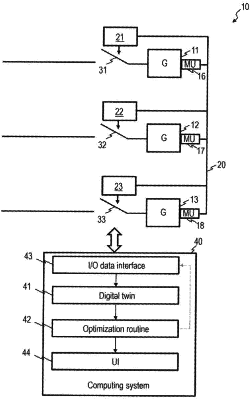| CPC G05B 23/0294 (2013.01) [G01W 1/10 (2013.01); G06F 30/20 (2020.01); G06Q 30/0206 (2013.01); G06Q 50/06 (2013.01)] | 19 Claims |

|
1. A method of determining system settings for an industrial system, the method comprising the following steps performed by a computing system:
retrieving digital twin data of a digital twin of the industrial system, wherein the industrial system comprises a plurality of energy generation and/or storage devices, a plurality of control devices, and a communication network connected to the plurality of control devices, wherein the digital twin is configured to mimic behavior of the plurality of energy generation and/or storage devices and behavior of the plurality of control devices;
synchronizing the digital twin with the industrial system by:
monitoring messages transmitted in the communication network of the industrial system; and
based on the messages transmitted, adapting the digital twin to reflect changes in physical devices of the industrial system;
performing system simulations of the industrial system based on the digital twin data to explore candidate system settings for the industrial system prior to application of one of the candidate system settings to the industrial system, the system simulations being performed on an ongoing basis during commissioning and/or operation of the industrial system,
wherein at least one objective or at least one constraint used in the system simulations is changed while the system simulations are being performed on an ongoing basis; and
providing results of the system simulations for identifying one of the candidate system settings for application to the industrial system.
|